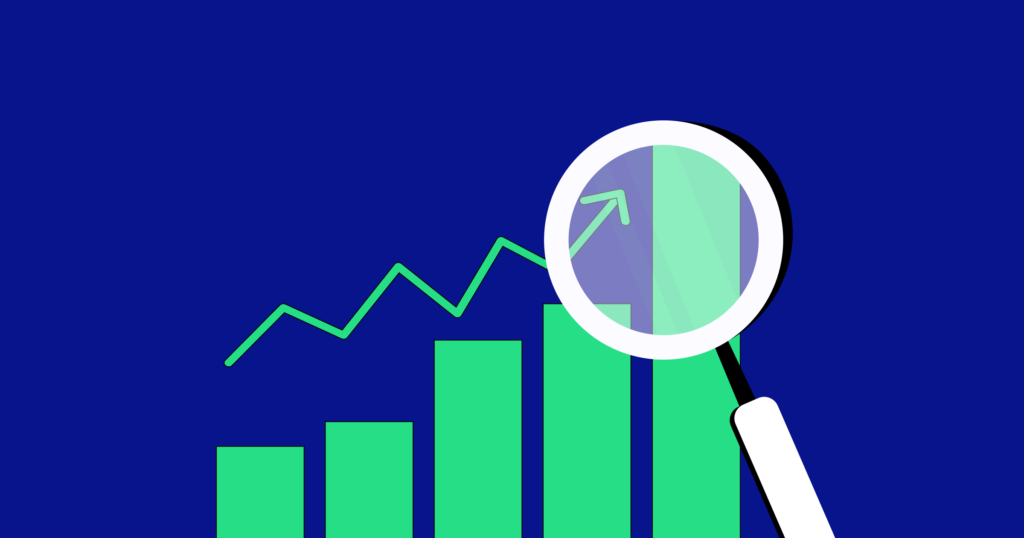Cryptocurrencies have taken the financial world by storm, offering both opportunities and challenges for investors. To succeed in this volatile market, you need more than just luck; you need knowledge. This article will equip you with the skills to interpret crypto charts, enabling you to make informed decisions and stay ahead in the crypto game.
Table of Contents
- How to Read Crypto Charts
- Frequently Asked Questions
- What is the significance of candlestick patterns in crypto chart analysis?
- How often should I check crypto charts?
- Are there any free resources for learning crypto chart analysis?
- Can I rely solely on crypto charts for trading decisions?
- What is the most common mistake traders make when reading crypto charts?
- How can I stay updated with the latest crypto chart analysis?
- Conclusion
How to Read Crypto Charts
The Basics
Before diving into the intricacies of how to read crypto charts, let’s start with the fundamentals. Crypto charts come in various types, but the most common are line charts, candlestick charts, and bar charts. Each chart types conveys different information, and understanding their nuances is essential.

Line Charts
Line charts provide a simplified view of an asset’s price over time. They connect closing prices with a continuous line, offering a quick overview of the asset’s performance. Line charts are great for spotting trends but lack detailed information.
Analyzing Time Frames
Crypto charts can display data over different time frames, such as minutes, hours, days, or even months. Short-term traders often use shorter time frames, while long-term investors prefer longer ones. Understanding which time frame suits your trading strategy is essential.
Candlestick Charts
Candlestick charts are more intricate. They display the open, closed, high, and low prices as candlesticks for a specific time frame. Bullish and bearish patterns emerge from these candlesticks, indicating market sentiment. Learning to recognize these patterns is crucial for successful trading.
Bar Charts
Bar charts are similar to candlestick charts but use vertical bars to represent price ranges. They are excellent for assessing volatility and identifying key support and resistance levels.
Reading Indicators
You’ll need to incorporate technical indicators to gain deeper insights from crypto charts, you’ll need to incorporate technical indicators. These indicators, such as Moving Averages, Relative Strength Index (RSI), and Bollinger Bands, help you assess market trends, momentum, and potential reversals.
Identifying Support and Resistance
Support and resistance levels are critical concepts in crypto chart analysis. Support represents a price level where an asset tends to find buying interest, preventing it from falling further. Resistance, on the other hand, is a level where selling pressure typically emerges. Recognizing these levels can assist you in making strategic entry and exit decisions.
Volume Analysis
Volume is another essential aspect of crypto chart analysis. It reflects the number of assets traded during a specific period. High volume often confirms the strength of a trend, while low volume may indicate a potential reversal.
Risk Management
No discussion about reading crypto charts would be complete without addressing risk management. Before making any trade, set stop-loss orders to limit potential losses and define your risk tolerance.
Emotional Control
Emotions can cloud judgment, especially in the volatile world of cryptocurrencies. Stick to your trading plan, and don’t let fear or greed dictate your actions. Reading crypto charts is a skill that requires discipline and a rational mindset.
Frequently Asked Questions
What is the significance of candlestick patterns in crypto chart analysis?
Candlestick patterns are essential in crypto chart analysis as they reveal market sentiment. Patterns like “bullish engulfing” and “doji” can indicate potential reversals or continuations of trends.
How often should I check crypto charts?
The frequency of chart checking depends on your trading strategy. Day traders may check charts multiple times daily, while long-term investors can review them less frequently, such as weekly or monthly.
Are there any free resources for learning crypto chart analysis?
Yes, many free resources are available online, including tutorials, articles, and YouTube channels. Additionally, some crypto exchanges offer educational materials for their users.
Can I rely solely on crypto charts for trading decisions?
While crypto charts provide valuable insights, they should be used in conjunction with other factors, such as fundamental analysis and news events, to make well-rounded trading decisions.
What is the most common mistake traders make when reading crypto charts?
One common mistake is overtrading, where traders make impulsive decisions based on short-term chart movements. It’s crucial to stick to your strategy and avoid emotional reactions.
How can I stay updated with the latest crypto chart analysis?
You can stay updated by following reputable crypto news websites, joining online communities, and subscribing to newsletters and social media accounts dedicated to crypto analysis.
Conclusion
Reading crypto charts is a skill that can significantly enhance your cryptocurrency trading journey. You can make informed decisions and mitigate risks by mastering the basics, understanding different chart types, and utilizing technical indicators. Remember, practice makes perfect in the world of crypto chart analysis.




